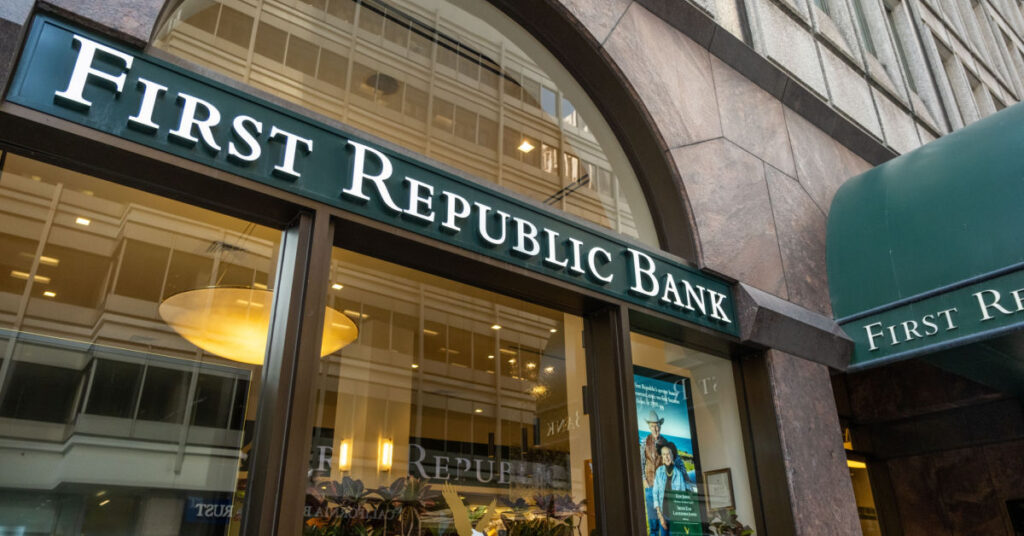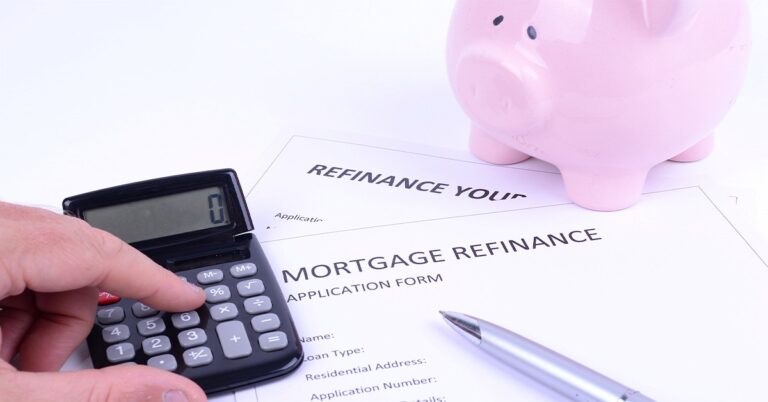The early hours of Monday morning brought another stunning development in the recent saga of the U.S. banking sector as struggling First Republic Bank was seized by the federal government and sold to JPMorgan Chase Bank.
Officially, the flagging San Francisco-based financial institution was closed by the California Department of Financial Protection and Innovation, which appointed the Federal Deposit Insurance Corp. (FDIC) as the defunct bank’s receiver. The FDIC then took hold of First Republic’s assets and auctioned them to Chase, already the nation’s largest bank.
Chase paid the FDIC some $10.7 billion for nearly all of First Republic’s assets and will assume all of First Republic’s deposits. According to a statement from the FDIC, it is entering a loss-share agreement with Chase as the bank takes on First Republic’s single-family residential and commercial mortgages. The FDIC and Chase will share in the losses as well as the potential profits of the loans covered by the deal. First Republic originated more than $25 billion in loans last year, and a statement from Chase estimated the loans it acquired from First Republic at about $173 billion, along with approximately $30 billion in securities.
The 84 former First Republic offices in eight states reopened on Monday as branches of Chase, with the FDIC announcing that all First Republic depositors have transitioned into Chase depositors and should have full access to their deposits.
“Our government invited us and others to step up, and we did,” said Jamie Dimon, chairman and CEO of Chase. “Our financial strength, capabilities and business model allowed us to develop a bid to execute the transaction in a way to minimize costs to the Deposit Insurance Fund.”
The sale ended a monthslong downward spiral of hemorrhaging deposits and mushrooming debt, leading to what is now the second-largest bank failure in American history. First Republic, like the capsized banks that preceded it in the first quarter, had a disproportionate share of uninsured deposits from affluent customers, leading both Fitch Ratings and S&P Global Ratings to downgrade its credit rating in March. S&P noted that it had a liability-to-deposit ratio of 111%, an abnormally lopsided proportion of loans to deposits.
Eleven of its competitors, including Chase, eventually banded together to deposit $30 billion into First Republic’s coffers on March 16, tossing the ailing institution a temporary life preserver. Still, some $100 billion were slashed from the bank’s deposits that month as worried customers withdrew in droves and moved their funds to safer havens. As of April 13, First Republic had approximately $229.1 billion in assets and $103.9 billion in deposits.
Even the influx of deposits wasn’t enough to save First Republic, as customer confidence never rebounded and stock prices sank. Over the past few days, efforts to find a savior in the form of a buyer were both hectic and moribund, leading to Monday’s bleak news.
Along with the run on deposits and the plunge in customer confidence, Bloomberg cited First Republic’s aggressive interest-only jumbo mortgage strategy as a key factor in its demise. First Republic founder Jim Herbert was a pioneer of the jumbo mortgage in the early 1980s, and his strategy to woo wealthy clients with customer-focused loans remained evident in First Republic’s recent lending strategies. Particularly, per Bloomberg, First Republic offered many interest-only mortgages to extremely high-income borrowers, exempting them from paying any principal for the first decade of the loan.
It was a strategy that hit paydirt during the pandemic-era housing boom, as the historically low interest rate environment attracted borrowers. The frenzy was enough to help First Republic double its assets over just four years. But instead of packaging them into mortgage-backed securities and selling them to investors, First Republic made the bold choice to hold onto many of these loans. And when the Federal Reserve’s hawkish fiscal policy led interest rates to skyrocket, its loan portfolio became worth less — a whole lot less.
It’s highly likely that having to assume these losses, estimated in the tens of billions, made many potential suitors balk at a deal during the last gasp to save First Republic from complete collapse. It’s also probable that many would-be bidders wagered correctly that, should First Republic ultimately flounder, its assets would be made available on the cheap from the FDIC. Meanwhile, First Republic’s income relied heavily on the low-yield loans, many of which were nowhere near their maturation date. It was a perfect storm, bringing about the latest twist in a turbulent chapter in U.S. banking.







